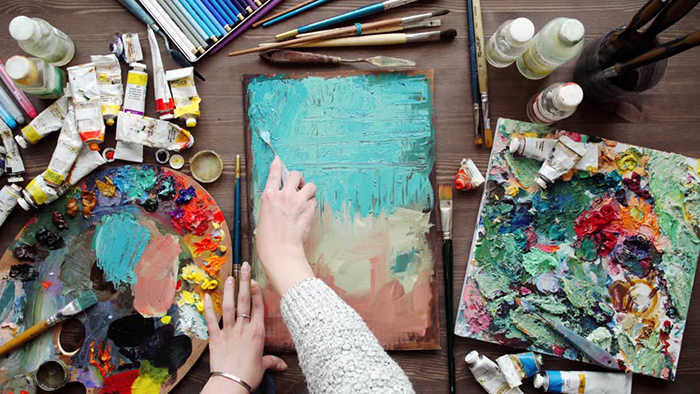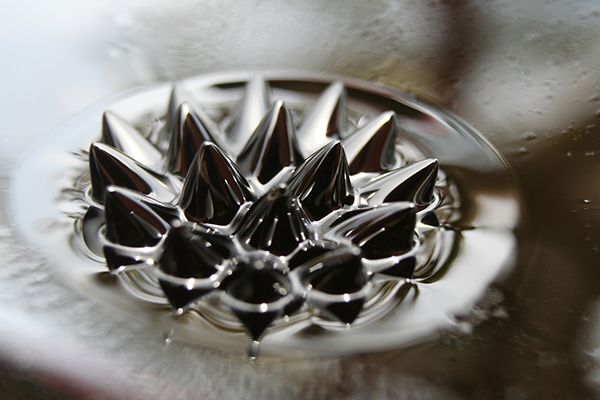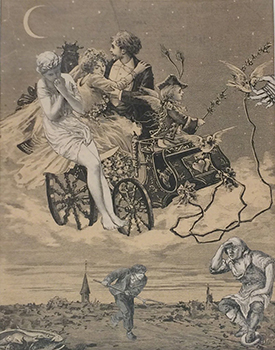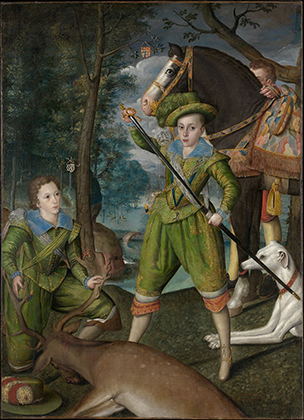Painting Appraisal with Art of Estates
Art of Estates’ Appraisal Firm provides valuation services for a host of painting media forms, but the art appraisal field and art world both lack a clear definition of the term painting. Art news sources, including that of Art NEWS, have struggled to put a finger on exactly what the term painting really means in art. Largely, because of artists in the 20th Century, who were contemporary in their time, sought out to redefine and bend the rules of established forms of creating works of art. As an example artist’s like Peter Max would use offset lithography (100% mechanical print method), silkscreen (hand and mechanized print method), and unique hand-embellishments (brush painting) on a single artwork, often editioned blurring lines of what some might call an art painting and others might call an art print.
For the sake of this art appraisal website, we’ll define paintings as a unique, 1 of 1, work of art that was created by a wet media by hand (without a machine) and hand-transferred to a ground. In other words, not mechanically or in a dry media (as a pastel, pencil or charcoal would be considered). Paintings by that description would include watercolor, oil, acrylic, and gouache. A simple example would be oil from a palette, transferred by hand with a brush to a canvas and finally dried for public purchase and acquisition. While other mediums may be added to these media forms to create a melding of the two, we’ll call those mixed media and include those in our Fine Art Appraisal page.

When Art of Estates appraises art, we collect as much information from our client (usually in the form of provenance), the painting we are inspecting onsite, the market, and from a valuable host of resources when we are performing a formal art appraisal report for our clients. All of the information together, collectively as a whole, allows us to make a final conclusion on the value or cost, based on your reports definition in our report. All the information pertaining to value will be included in your appraisal report. Putting all this information together in an organized, professional, and archivable format allows family, future generations, or even a buying art collector to know about your artworks history by providing a visual and virtual snapshot in time of its value (great for estate planning) and condition (great for insurance purposes).
Below, we’ll discuss some the more important art movements, regions and styles. Please note that transitionary periods or styles can be seen in many different levels (of notoriety) in the art world and even within artist’s body of work. Some artists were even early pioneers of a movement, but lacked fanfare, representation or exposure to the market at large, resulting in early failures and late success (Clyfford Still or Bob Ross) or quite the opposite (Wayne Willis or Frederic Shane). However, these concerns depend on a range of other factors of influence, including, but not limited to regional and stylistic trends and/or the economic period placement historically. In the end however, the art market dictates the value of your painting(s), not personal opinions.
Descending in time, we’ll talk about some of the more important art movements for painting, the artists who were pioneers or important of those, and when the art movements were most actively followed and produced.
21st CENTURY ART 2000-2099
While the 20th Century has been the most eventful period yet to appear in the artworld, the 21st Century will likely be considered the same by the 22nd Century. While technology appears to be moving exponentially faster every year, so does the flow of information from one continent to the other and sub-culture to culture through social media, advanced travel options, and email. This movement of ideas, techniques, education, advances in compositions coupled with increased exposure will continue to foster creativity. Economic fluctuations that now included the Great Recession and political adjustments of the Middle East, including Europe and Great Britain’s Brexit process.
While traditional media in art is still strong with watercolor, oil, acrylic and gouache, techniques frequently being used in the contemporary art market now include video, 3D, NFTs, virtual reality and a host of modern materials or minerals once thought of as waste or unrecyclable are now entering the art world as upcycled, repurposed as well as in the recycled form. While this may sound a bit like assemblage used by collage and folk artists, it has become more prevalent in the Fine Art world and has become more refined with more considerations to its conservation unlike previous generations. A photo below features Ferrofluid, a liquid that becomes magnetized in the presence of a magnetic field. Originally invented by NASA’s Steve Papell in1963 as a liquid rocket fuel is now used by a small number of artists, but most notably by Japanese artist Sachiko Kodam.

20th CENTURY PAINTINGS 1900-1999
Currently considered among art critics as the most eventful period in art history. The 20th Century art movements arose from worldwide scientific advancements, political upheavals, social changes, increased industrialization, formal education, trade partnerships, transportation developments, multiple world wars and civil wars resulting in new borders, economic fluctuations that included the Great Depression and ended with the dot-com boom.
These elemental tides gave rise to the most influential modern and contemporary art movements and developments that include Neo Expressionism, Street Art, Photorealism, Minimalism, Op Art, Pop Art, Abstract Expressionism, Regionalism, Surrealism, Futurism, Dada, Cubism, Primitivism, and Fauvism.
Neo-Expressionism: 1979-1990
-
-
-
Neo Expressionism movement is a form of Postmodernism art born in Germany in the late 1970’s spreading to other parts of Europe and United States.
-
-
- David Salle, Kay Harvey, Jean-Michel Basquiat, Eric Fischl
-
Street Art: 1970-present
Street art is a movement that sprung from the 1960’s from creating images in unsanctioned (illegal) public locations, executed outside of the context of traditional spaces. Also known as Urban Art, Guerrilla Art, and Graffiti using acrylic spray paint free-hand, stencils, wheat pastes, stickers, street installations, with physically intrusive sculptures, and visually intrusive videos and yarn-bombing.
John Crash Matos, Invader, Banksy, Kenny Scharf, Lady Pink, Swoon, Shepard Fairey, Rammellzee, Futura 2000, Dasic Fernandez, SEEN, Keith Haring, RETNA
Photorealism: 1968-present
Also known as Hyperrealism and Superrealism, is defined as picture quality paintings that nearly trick the eye with images appearing to replicate the real world in photo detail.
Ralph Goings, Audrey Flack, Richard Estes, Glennray Tutor, Hilo Chen, Robert Cottingham
Minimalism: 1960-1975
Period when art became a reaction to the busy compositions of Abstract Expressionism and was typically referred to as anything that is spare, basic or stripped to its essentials or lacking any elements whatsoever.
Donald Judd, Eva Hesse, Tony Smith, Carmen Herrera, Frank Stella, Agnes Martin, Sol”LeWitt, Richard Serra
Op Art: 1960-1975
A period when sharp geometric and architectural based illusions were created with flat surfaces and appear to move visually from different vantage points.
Bridget Riley, Victor Vasarely, Yaacov Gipstein Agam, Josef Albers, Richard Anuszkiewicz
Pop Art: 1955-1975
Artistic period when images began depicting images of popular brands, culture, comics, advertising with hard edges using commercial processes like silk-screening.
Tom Wesselmann, Andy Warhol, Robert Indiana, Edward Ruscha, Roy Lichtenstein, Claes Oldenburg
Abstract Expressionism: 1945-1960
Abstract Expressionism signaled a new age of American artistic expression through spontaneity, monumental size, and individualism at the end of World War II. The art style, that excluded geometric shapes and realism, is broken into two categories of Gestural Abstraction (action painting), which emphasized the energy and Color-field Painting, which focused on the creation of vast, seemingly floating areas of color atop of one another. The rise of Abstract Expressionism has been attributed to the influence of European movements like Cubism and Surrealism, which reached New York in the 1930’s and 1940’s via museum exhibitions, academic institutions, and the stateside relocation of many major European artists due to World War II.
Jackson Pollock, Helen Frankenthaler, Robert Rauschenberg, Clyfford Still, Vance Kirkland
American Regionalism: 1930-1945
A realist modern art movement that included paintings, murals, and illustrations depicting realistic scenes of rural and small-town America primarily in the Midwest and Deep South. In response to the Great Depression, the style reached its height of popularity from 1930 to 1935, as it was widely appreciated for its iconic and emblematic scenes from the American heartland and bible belt with subtle undertones of political and social change. The art was a relatively conservative and traditional.
Edna Reindel, Roger Medearis, Buell Whitehead, Thomas Hart Benton, Grant Wood
Surrealism: 1920-1935
The movement started as a lyrical and highly abstract form that was referred to as Automatism, mostly strongly represented in works by Joan Miro. The second phase of this period was an Illusionary Surrealism phase of Salvador Dalí that depicts the element of surprise within a dream like state with unexpected juxtapositions and suggestive analogies.
Jimmy Ernst, Dora Maar, Yves Tanguy, Leonor Fini, Oscar Dominguez Palazon
Futurism: 1909-1929
An Italian born art movement using themes of the contemporary social issues of the time connecting the future. Subjects, themes and ideas were based on the increasing speed of technology, airplanes, automobiles, industrial revolution, youth, and violence. Compositions focued on the movement of the object within an artwork, manipulating and overlaying an image several times to understand the motion and movement it creates.
Gino Severini, Mina Loy, Natalia Sergeevna, Giacomo Balla, Alexandra Exter, Tamara De Lempicka
Dada: 1912-1924
A pre-war avant-garde inspiration for an international movement based on rejecting logic, reason and aesthetics of the capitalist society and its political rhetoric. The artists believed that government was heavily corrupt and was repressive of their social values. Their artworks expressed absurdity, nonsense, irrationality and socialist idealisms that were considered extreme leftist politically often expressing discontent with war, violence, and nationalism using unconventional materials in assemblage form with collages and photo-montage. Marcel Duchamp considered common manufactured goods as “readymade” works of art challenging norms of what art is or has become. New York, Zurich, Cologne and Paris were considered hubs of the movement.
Max Ernst, Sophie Taeuber Arp, Francis Picabia, Marcel Duchamp, Man Ray

Cubism: 1907-1921
Abandoning academia-based techniques of chiaroscuro and foreshortening, cubism struck out to forge its own destiny in art history. The early analytic phase of cubism from 1908-1912 was a simpler form, using a wide range of mostly dark colors with overlapping layers creating a preconceived fusion of color. The artists would study objects and then break it up into different shapes arranging them into a variety of angles and viewpoints. This was done by showing many different aspects at once, using geometric shapes (cones, cylinders, spheres, polygons). The late synthetic phase of cubism from 1913-1921 was composed of simpler forms like the early phase, except with brighter colors.
Marie Vorobieva Marevna, Pablo Picasso, Maria Gutierrez Blanchard, Jean Metzinger, Marie Laurencin
Primitivism: 1906-1910
During the late 19th Century and early 20th Century, the French Empire’s expansion into Africa offered a fresh look for the European cultural elite. Pioneers and travelers were discovering African, Micronesian, and Native American Indian art and began bringing it back to Paris museums. Through these exhibitions, Parisian artists acquired an interest in Tahitian design, African art and tribal masks, giving rise to a more primitive approach to painting, thus attaining recognition in Paris’s avant-garde circles. The approach, like folk art, reduced complexity and focused on the basics of painting offering the most extreme approach against academia to date.
Paul Klee, Mikhail Larionov, Henri Rousseau
Taos School: 1900-1950
A period when Mexican and Native American Indian culture influenced artists who visited and stayed for metaphysical elements among harsh landscapes that influenced daily life in the Southwest. Taos artists were mostly captivated by the indigenous people of the land and picturesque landscapes.
Joseph Henry Sharp, Bert Geer Phillips, Ernest L. Blumenschein, Oscar Berninghaus, Kenneth Adams, Walter Ufer, Catherine Critcher, Victor Higgins, Eanger Irving Couse
Fauvism: 1900-1910
A color-emphasized movement exaggerating colors to describe light and space, and redefined pure color and form as means of communicating the artist’s emotional state of mind. Color was the most important aspect of a fauvist painting, with the subject taking a backseat. Fauvism, which actually means “wild beast” as first titled by an art critic, in some ways grew out of the Impressionism movement.
Alice Bailly, Jean Metzinger, Kees (Cornelis Theodorus Maria) Van Dongen, Andre Derain, Maurice de Vlaminck
-
19th CENTURY PAINTINGS 1800-1899
The 19th Century witnessed incredible technological and social advancements, spawned by the Industrial Revolution that brought on urbanization, territorial expansions, poor working and living conditions.
Paris, at the time, was ground-zero for the art world in the 19th Century. During this period, patronage of the arts shifted increasingly towards the rich, wealthy and well-educated elite giving rise to the art dealers and critics. The French Academy and Salon represented the traditional establishment, favoring Neoclassicism at the beginning of the century and later Romanticism.
Artists began to push back on this traditional Salon system in the latter half of
This was also a period in which Japan began trading globally and began to influence style, technique and provided inspiration in European art.
-
Art Nouveau: 1890-1910
- Art Nouveau is an elegantly decorative art style characterized by intricate patterns of curving lines used in architecture, paintings, and decorative arts. Art Nouveau was popular in Europe and the United States until World War
I, and gave way to Art Deco. - Maxfield Frederick Parrish, Margaret Macdonald
Makintosh , Loie Fuller, Gustav Klimt, Sarah Bernhardt
Pointillism: 1886-1905
- Pointillism is an art movement that uses tiny dots of primary colors to generate secondary colors focusing on the specific style of brushwork used to apply the paint. Growing from Divisionism’s focus on the color wheel, Pointillist art is considered to have been an influence on Fauvism and is often considered a form of Post-Impressionism. Pointillism oddly, was the primary inspiration for the modern copy machine process.
- Théo van Rysselberghe, Maximilien Luce, Georges Lemmen, Georges Seurat, Henri Edmond Cross
Post-Impressionism: 1885-1905
The Post-Impressionism art movement is a wide, encompassing term including many artists and a variety of techniques that were influenced by Impressionism but take a myriad of paths. While there is a specific Post-Impressionism art definition, it is generally considered more emotionally charged and less idyllic than most Impressionist artworks.
Paul Cezanne, Vincent van Gogh, Henri Rousseau, Henri de Toulouse-Lautrec, Suzanne Marie-Clémentine Valadon
-
Tonalism: 1880-1910
Painting style of landscapes depicting soft light and shadows, often using a foggy or misty veil. With an emphasis on aesthetics, elegance, and harmony through the colors of a painting. Neo-Expressionism was the precursor to American Impressionism, Neo-Expressionism and was influential in photography of the early 20th Century.- Birge Harrison, Thomas Dewing, George Innes, Dwight Tryon
Impressionism: 1860-1885
- Impressionism uses a small, light brushstroke with spontaneity capturing a viewer oriented, idealism impression of light in a painting. This style of painting, like many other movements, arose from the disdain of conventional and restrictive painting techniques taught by academics. The art movement had faded towards the end of the 19th century, splintering into a variety of similar art movements regularly referred to as Post-Impressionism. The Impressionist art movement is largely considered the single most identifiable and influential painting movement and is still widely practiced.
- Mary Cassatt, Alfred Sisley, Edouard Manet, Frederic Bazille, Lilla Cabot Perry, Gustave Caillebotte, T.C. Steele
Symbolism: 1857-1896
A period in 19th Century art that architectural-based with exaggerated sensitivity and manifestos of dark mysticism attracting a host of other focus forms including poets and even theatrical playwrights. It was a continuation of the Romantic tradition developing artistic approaches were more philosophical using mythology, astrology, and dream imagery as the visual language of the soul. It is believed to have colors with the Art Nouveau, Les Nabis, and Expressionists art movements.
Henri Fantin-Latour, Gaston Bussiere, Carlos Schwabe, Felicien Joseph Victor (Fely) Rops
Realism: 1850-1875
The earliest Realist art began to appear in the 18th Century, resulting from the excess of Romanticism and Neoclassicism. Realism’s approach to art depicts subjects as they are (or seen) without idealizing them, using false coloration, and without following rules of formal artistic theory. As artists became disenchanted by the artifices of art academia and salons, it gave rise to the most prominent Realist art era in the middle of the 19th Century. The French Realism, which came close to being an organized movement until it lost its political friction, eventually provided influence on the philosophy of the Impressionists art movement.
Rosa Marie (Rosalie) Bonheur, Violet Oakley, Daniel Ridgway Knight, Henry Ossawa Tanner, Martin Rico y Ortega
Hudson River School: 1840-1875
The art of the Hudson River School melds two generations of American painter’s romantic images of America’s wilderness in the Hudson River Valley and in the undiscovered parts of the West. Sunsets and sunrises were often dramatized with light creating a natural, yet spiritual element to the mood, which subsequently became another technique called Luminism.
Eliza Greatorex, Frederic Edwin Church, Laura Woodward, Thomas Cole
Barbizon: 1830-1870
The Barbizon School took its name from a village south of Paris near Fontainebleau Forest, called Barbizon. As an advancement against traditional art academia, the landscape painters worked to abandon theory to create a more accurate representation of life in the countryside and were considered part of the French Realist movement. dream-like, the art approaches were said to have given rise to the Impressionists and even Modernism with their focus on individualism.
Theodore Rousseau, Ivan KonstantinovichAivazovsky, Constant Troyon
Romanticism: 1800-1850
Romanticism emerged as a reaction against Neoclassicism. A time often associated with liberalism, radicalism, and more importantly nationalism. It did not really replace the Neoclassical style so much as it was a counterbalancing influence, and many artists were influenced by both art forms to a certain degree.
Eugène Ferdinand Victor Delacroix, Ferdinand Georg Waldmüller, Theodore Chasseriau
18th CENTURY PAINTINGS 1700-1799
Paintings during the 18th Century witnessed two influential periods known as the Enlightenment and French Revolution. Known as a light, elaborate and decorative style of art, the paintings of Neoclassicism were most popular in France and associated with the reign of King Louis XV (1715-1774) eventually giving rise to Romanticism.
-
Neoclassicism: 1760-1830
- Neoclassical Art was a rigid reaction to the overblown Rococo style and the emotionally charged Baroque style. Neoclassical’s unemotional form of art was a style likened to that of ancient Greece and Rome. The rise of Neoclassical Art grew out of interest in the classical thought, which was of some importance in the American and French revolutions.
- Jacques Louis David, Michel Garnier, Nicolas Lancret,Nicolas-Antoine Taunay, Louis-Leopold Boilly
17th CENTURY PAINTINGS 1600-1699
The 17th Century saw expansions in global trade networks carrying with these networks an exchange of artistic objects, ideas, culture, aesthetics, and styles in Europe. Particularly in France, the country transitioned the consolidation of power under
The great variety of artistic production in Europe in the 17th century is often loosely grouped under the Rococo and Baroque movements. The baroque style reflected the crisis of feudalism during a period of initial accumulation of capital and colonial expansion, as well as the growing contradictions in religious and social consciousness. The baroque architectural style was widely used in cathedrals during the Counter-Reformation and was distinguished by its magnificence. The exuberance of Baroque aesthetics combined with the fervor of the Catholic Counter-Reformation is evident in the
-
Rococo: 1684-1775
- Developing out of Paris, France against symmetry and grandeur, it takes a wittier and graceful approach using ornate, asymmetrical designs, and curves with light colors, particularly gold. It grew out of the distaste of the previous Baroque style, especially of the Palace of Versailles, until it was redone. Courtship parties were often depicted in paintings of the Rococo Art movement.
- Willem Van Mieris, Jean-Francois de Troy, Jean Baptiste-Simeon Chardin
-
Baroque: 1600-1685
- Baroque Art arose in Europe around 1600 against the intricate and formulaic Mannerism dominating the Late Renaissance. Characterized by a heightened sense of movement and lighting compositions, Baroque is less complex with easily interpreted details that produce drama, tension, exuberance, but more emotionally charged and realistic than its predecessor Mannerism. Baroque art was encouraged by the most important patron of the arts at that time, the Catholic Church, fostering a return to tradition and spirituality. A decision made by Catholic leaders at the Council of Trent, in response to the Protestant Reformation, exuded that the arts should communicate religious subjects with direct emotional involvement. Aristocrats considered Baroque art and architecture as a means of projecting triumph, power, and control. The style began in Rome and spread to most of Europe.
- Bartolomeo Bimbi, Pierre Puget, Giovanni Baglione, Justus Sustermans, Sir Godfrey Kneller, LouyseMoillon, John Michael Wright, Abraham van Beyeren
15th Century & 16th CENTURY PAINTINGS 1400-1599
Following the Middle Ages came the Renaissance when Europe regained interest in the classical learning and values of ancient Greece and Rome. In addition to its expression of classical Greco-Roman traditions, Renaissance art provided insight into the individual beauty and mystery of the natural world. With it, came a new system of astronomy and the discovery and exploration of new continents followed by a flowering of philosophy, literature, political stability, prosperity, art and the printing press. The style of painting, sculpture and decorative arts identified with the Renaissance emerged in Italy in the late 14th Century reaching its height in the late 15th Century and early 16th Century.
Nicolas Froment, Niccolò Alunno, Rogier Van Der Weyden, Sebald Bopp, Giuseppe Arcimboldo
-
Mannerism: 1520-1580
- Mannerism art, is noted for intellectual sophistication and its unnatural qualities encompassing a variety of approaches favoring tension and over balance and clarity of earlier Renaissance painting. Mannerism exaggerates proportion, balance, and ideal beauty, often resulting in compositions that are asymmetrical or unnaturally elegant.
- Simon Pereyns, Antoine Caron, Lorenzo Lotto, Caterina van Hemessen, Sofonisba Anguissola, Robert Peake the Elder, Agnolo Bronzino

-
Northern Renaissance: 1430-1550
- Considered a late transition of the Renaissance period into the Mannerism style, paintings included the Northern European Gothic tradition while combining a more modern human approach provided by modern achievements in science.
- Jan Van Eyck, Robert Campin, Hieronymus Bosch
-
Renaissance Art: 1400-1500
- With an expansive resurgence of knowledge of philosophy, literature science, and contemporary advances, these themes became more evident, but with a classical antiquity with formal restraints overseen and judged by the church.
- Sandro Botticelli, Masaccio (Tommaso di Ser Giovanni di Simone), Andrea Mantegna, Domenico Bigardi Ghirlandaio, Lorenzo di Credi
14th Century & 13th Century Paintings 1200-1399
These centuries were primarily controlled by the Proto renaissance movement, denoting art from northern Italy largely from 1280-1400. A form that wasn’t quite Gothic or Romanesque, but is considered the primary influence of the Renaissance period. Painting subjects were largely religious and often included halos around the heads of figures.
Giovanni Pisano, Duccio di Buoninsegna, Segna di Bonaventura


